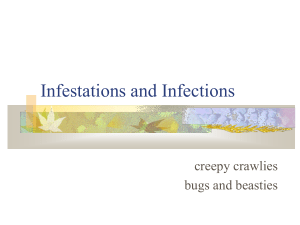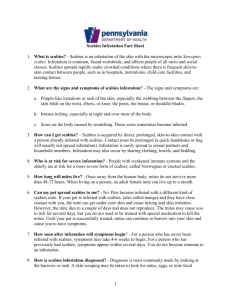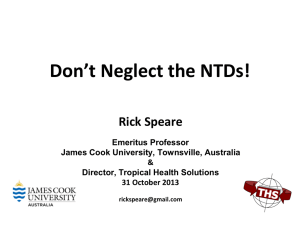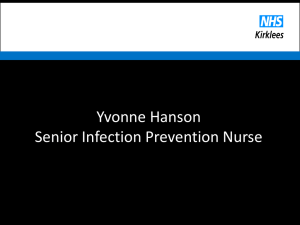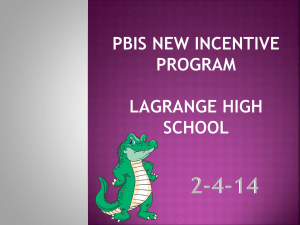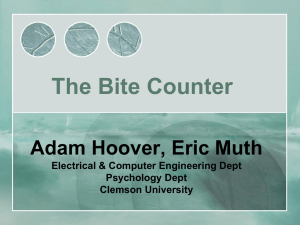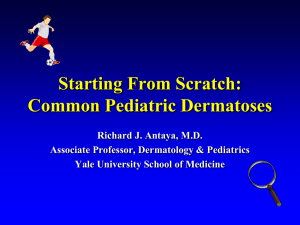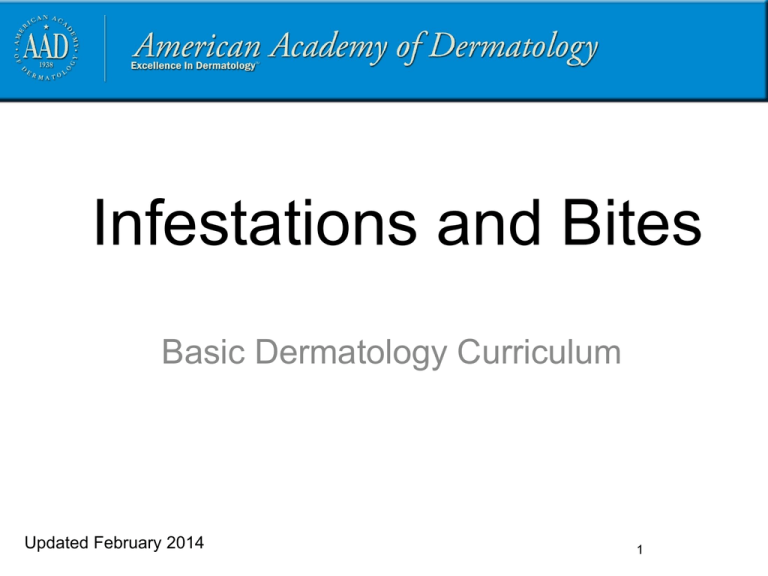
Infestations and Bites
Basic Dermatology Curriculum
Updated February 2014
1
Goals and Objectives
The purpose of this module is to help the learner develop a
clinical approach to the evaluation and initial management
of patients presenting with bites and infestations.
After completing this module, the learner will be able to:
•
•
•
•
•
Identify and describe the morphology of scabies
Recognize risk factors for lice infestation and scabies
Identify nits and adult lice as diagnostic of pediculosis
Select skin scraping as the diagnostic test of choice for scabies
Identify common causes and clinical presentations of insect bite
reactions, with an emphasis on bedbugs and brown recluse spider
bites
• Discuss treatment options and patient education for pediculosis
capitis, scabies and insect bite reactions
2
Case One
Mary Thompson
3
Case One: History
HPI: Mary is a 6-year-old girl with a two-week history of an
itchy scalp. It has not improved with over-the-counter
dandruff shampoo. She recently stayed over at her
cousin’s house who now has the same problem.
PMH: no chronic illnesses or prior hospitalizations
Allergies: no known allergies
Medications: none
Family history: noncontributory
Social history: lives with her parents and attends first
grade
ROS: negative
4
Exam of the Occipital Scalp
Structures on the hair are not
freely movable
5
Case One: Question 1
How would you describe Mary’s exam?
a. Multiple hair casts present. No nits or lice
noted.
b. Multiple lice present. No nits noted.
c. Multiple nits present. No lice noted.
d. Negative exam, no nits or lice noted.
6
Case One: Question 1
Answer: c
How would you describe Mary’s exam?
a. Multiple hair casts present. No nits or lice
noted.
b. Multiple lice present. No nits noted.
c. Multiple nits present. No lice noted.
d. Negative exam, no nits or lice noted.
7
Exam Findings
Numerous nits (oval egg capsules) firmly fixed to the
hair shaft
8
Pediculosis (Lice)
Three different varieties of lice may infest humans
• Head louse – Pediculus humanus var. capitis
• Body louse – Pediculus humanus var. corporis
• Pubic or crab louse – Phthirus pubis
Head lice are spread by close physical contact and
fomites (e.g., brushes, helmets, bedding)
Commonly affects school-age children
Affects all ethnic and socioeconomic groups, but is
less common in African-Americans
9
Pediculosis: Clinical Features
Frequently has associated scalp pruritus
May also have posterior cervical
lymphadenopathy
Dermatitis may be present on the
posterior neck
Nits are noted more commonly than lice
on exam (live lice scurry away from light)
10
Pediculosis: Clinical Features
The most common sites to find nits are on the
retroauricular and occipital scalp.
Nits within 1 cm of the scalp are typically
viable. The distance may be greater in warm
environments.
Nits must be distinguished from hair casts.
• Hair casts encircle the hair shaft and move
freely in contrast to the nit which is cemented
to the hair.
11
Pediculosis: Pathogenesis
Female adult lice live 30 days and lay 5-10 eggs
(nits) per day at the base of the hair where it meets
the scalp.
Eggs hatch in 8-12 days.
Live eggs remain close to the scalp to maintain
warmth and moisture but as the hair grows, the nits
move off the scalp with the hair.
Because hair grows at a rate of ~ 1 cm per month,
the duration of infestation can be estimated by the
distance of the nit from the scalp.
12
Pediculosis: Pathogenesis
The adult head louse is 2-3 mm
in length and has six legs.
The presence of live adult lice,
immature nymphs, and/or viable
eggs indicate active infestation.
Lice typically survive 1-2 days
away from the scalp. Eggs may
survive up to 10 days away
from the scalp.
13
Hair Mount
This image shows a nit without
an intact cap (operculum), and
is not viable (no larva inside).
Viable eggs are usually tan to
brown in color.
Hatched eggs are clear to
white.
Empty egg casings are often
easier to see b/c they appear
white against darker hair.
14
Pediculosis: Treatment
Individual patient factors should be assessed prior to
choosing a topical therapy (age, allergy history, prior
treatment, etc.).
It is prudent to re-treat with topical therapies 7-9 days after
initial therapy to kill the newly hatched lice.
First-line over-the-counter and prescription topical
therapies are listed on the following slide.
• Use OTC permethrin 1% or pyrethrins when resistance is not
suspected.
• Use malathion 0.5% when resistance to permethrin or
pyrethrins is documented or when treatment with these
products fails.
15
Therapy
Use
Ovicidal
Over-the-counter Topically to
Pediculocidal. Re-treat at
pyrethrins (natural clean, dry hair for day 9. Or consider
botanical)
10 minutes.
treatment on days 0,7 and
14.
Risks
Age
Potential allergic
reaction in patients
sensitive to
chrysanthemums and
ragweed.
+ Resistance
2 years +
Permethrin 1%
lotion
(synthetic
pyrethroid)
Topically to
Pediculocidal. Re-treat at + Resistance
clean, dry hair for day 9. Or consider
10 minutes.
treatment on days 0,7 and
14.
2 months +
Malathion 0.5%
lotion
(prescription)
Topically to
Pediculocidal AND
clean, dry hair for ovicidal. A single
8-12 hours.
application is usually
effective. Reapply at day
9 if live lice are seen.
6 years +
Benzyl alcohol 5% Topically to
Pediculocidal. Re-treat at
(prescription)
clean, dry hair for day 9. Or consider
10 minutes.
treatment on days 0,7 and
14.
Alcohol base is
flammable (avoid heat
sources during use).
+ Resistance (UK
formulation, less so in
the US).
6 months +
16
16
Pediculosis: Treatment
Adjunctive nit combing can be performed.
Occlusive methods have also been used to
suffocate head lice using substances such
as petroleum jelly and mayonnaise, but
study results have been variable.
Patients with refractory lice should be
referred to a dermatologist.
17
Case One: Question 2
Mary returns to clinic one month after treatment with
topical permethrin 1% lotion. If Mary had live lice in
the scalp on follow-up, which of the following answer
choices would be possible causes of treatment
failure?
a.
b.
c.
d.
e.
f.
Did not clean daily hair care products
Did not re-treat in 7-10 days
Did not treat contacts
Incorrect application of the medication
Resistance of the organism to medication
All of the above
18
Case One: Question 2
Answer: f
If Mary had live lice in the scalp on follow-up,
which of the following answer choices would be
possible causes of treatment failure?
a.
b.
c.
d.
e.
f.
Did not clean daily hair care products
Did not re-treat in 7-10 days
Did not treat contacts
Incorrect application of the medication
Resistance of the organism to medication
All of the above
19
Pediculosis: Patient Education
All persons living in the home should be
examined to avoid re-infestation.
• Those with live lice or nits within 1 cm of the scalp
should be treated.
• It is prudent to treat family members who share a
bed with the person with infestation, even if no lice
are found.
• If it is not possible to examine household members,
treat without an exam if the treatment is not
contraindicated.
20
Pediculosis: Patient Education
Clothing and bedding should be washed and
dried on the hot cycle of the dryer.
Brushes, combs and other hair care items can
be placed in hot (> 60°C) water for 10 minutes.
Non-washable items may be placed in the dryer
or stored in a sealed plastic bag for 3 days.
Children should not be restricted from attending
school because of lice.
21
Case Two
Michael Miller
22
Case Two: History
HPI: Mike is a 21-month-old boy who was referred
to the dermatology clinic for a rash that has been
present for two weeks. The itch has disturbed his
sleep.
PMH: no chronic illness or hospitalizations
Allergies: no known drug allergies
Medications: none
Family history: noncontributory
Social history: lives with his parents and attends
day care
ROS: negative
23
Case Two: Skin Exam
Multiple erythematous
papules on the trunk,
extremities and
genitals.
Burrows present in
the 2nd-3rd web space
on the right hand.
24
Case Two: Question 1
What in-office procedure would best help
to confirm the diagnosis?
a.
b.
c.
d.
KOH preparation
Nail clipping
Skin scraping
Wood’s light examination
25
Case Two: Question 1
Answer: c
What in-office procedure would best help to
confirm the diagnosis?
a. KOH preparation (commonly used to diagnosis
fungal infections of the skin)
b. Nail clipping (commonly used to diagnosis
onychomycosis)
c. Skin scraping (mineral oil preparation)
d. Wood’s lamp examination (commonly used to
assess the degree of pigment in the skin)
26
Case Two: Question 2
You perform a mineral oil preparation on the
patient.
• You use a 15-blade scalpel and scrape a burrow on
the skin. The scraped material is placed on a slide and
a drop of mineral oil is added. A cover slip is placed on
top and you see the image below when you look
through the microscope.
What do you see?
27
Case scabies
Two, mite
Question 2
scybala (feces)
egg
28
28
Scabies
Sarcoptes scabiei (scabies) affects patients of
all ages and all socioeconomic classes,
although it is more common in women and
children.
Immunocompromised individuals and those in
congregated facilities (e.g., nursing homes) are
more prone to infestation.
Most infections occur from direct contact with an
infected individual; however, fomites can
transmit infection.
29
Scabies: Clinical Features
The time from initial infestation to symptoms is
typically 3-4 weeks.
• Once sensitized to the mite, re-infestation results in
symptoms within 1-2 days.
Papules may commonly involve the axillae, breasts,
umbilicus, penis, scrotum, finger webs and wrists.
The scalp and head are more frequently involved in
infants, elderly and immunosuppressed individuals.
The hallmark feature is itching at night.
30
Scabies: Clinical Findings
31
Scabies Mite
The scabies mite is 0.35 x
0.3 mm in size and too small
to be seen by the naked eye.
Females lay about three
eggs per day, which hatch in
four days.
Most patients have less than
20 mites on the skin at a
time.
32
Case Two: Question 3
Which of the following clinical findings is
considered pathognomonic for scabies?
a.
b.
c.
d.
Burrows
Diffuse involvement
Erythematous papules
Sparing of the groin
33
Case Two: Question 3
Answer: a
Which of the following clinical findings is
considered pathognomonic for scabies?
a. Burrows
b. Diffuse involvement (may be diffuse, especially in
infants)
c. Erythematous papules (this primary morphology is
not specific to scabies infestation)
d. Sparing of the groin (genital involvement is
common)
34
Burrows
Burrows are linear markings in the skin due to the
movement of the mite. They are 1-10 mm in length and
are most readily found in the interdigital spaces, wrists
and elbows.
35
Burrows
Dermoscopy helps identify the mite at the
end of a burrow
36
Case Two: Question 4
Mike’s mother tells you his uncle, who is HIV+,
is currently hospitalized. Why is this important?
a. His uncle is unlikely to have been the source
of infestation
b. If his uncle has scabies, it could cause an
institutional outbreak
c. If his uncle gets scabies, it will likely be a less
severe form
d. This is not relevant information
37
Case Two: Question 4
Answer: b
Mike’s mother tells you his uncle, who is HIV+, is currently
hospitalized. Why is this important?
a. His uncle is unlikely to have been the source of
infestation (Immunosuppressed patients are at increased
risk for infestation)
b. If his uncle has scabies, it could cause an
institutional outbreak
c. If his uncle gets scabies, it will likely be a less severe
form (Immunosuppressed patients may develop crusted
scabies)
d. This is not relevant information
38
Crusted Scabies
Immune suppressed or neurologically impaired
individuals are at increased risk of developing crusted
scabies (hyperkeratotic scabies, formerly called
Norwegian scabies).
• Presents with thick, scaly, white-gray plaques with
minimal pruritus that is often localized to the scalp,
face, back, buttocks and feet.
• Fissures provide an entry for bacteria leading to
increased risk of sepsis and death.
• Immunocompetent persons who come into contact with
crusted scabies develop typical scabies.
39
Crusted Scabies
Crusted scabies is far
more difficult to treat.
There is an incredibly
high mite burden.
Refer to the HIV
Dermatology module for
more information on
crusted scabies.
40
Scabies: Treatment
Scabies treatment includes a two-pronged approach.
The patient and the environment must both be treated.
• Two topical treatments separated one week apart with a
prescription anti-scabietic medication are recommended.
• Apply topical medication from the neck down and leave on
overnight; for infants and the elderly, include the face and
scalp.
Itch and lesions can persist for 2-4 weeks after
successful treatment, referred to as “post-scabietic”
pruritus or dermatitis.
• This is not a treatment failure, rather it represents the
body’s response to dead mites.
41
Scabies: Treatment
Environmental care includes washing all
clothing and linens used within the last week in
hot water and drying on high heat. For items
that cannot be washed, seal items in bags for at
least 3 days.
Isolation from other people is unnecessary as
the causative organism cannot jump or fly, and
can survive for only approximately 72 hours
away from the skin.
42
First-line Treatments
Therapy
Use
5% permethrin
cream
Topically overnight
on days 0 and 7.
Apply from neck
down. Include
scalp and face in
infants and elderly.
Low systemic
absorption, ~2%.
May burn or sting on
application.
First-line treatment in patients over 2
months old.
Apply overnight for
three days, then
wash off
Greasy, strong odor,
stains clothing
Safe in pregnancy and children
under 2 months old.
5-10%
precipitated
sulfur
Risks/Side effects
Other
Pregnancy category B
Oral ivermectin 200 mcg/kg by
Generally wellMost useful for immunocompromised
mouth, repeat dose tolerated. May cause
patients or when topical therapy is
two weeks later
pruritus and rash. CNS impractical (outbreaks).
toxicity is possible.
Pregnancy category 43
C (generally not
recommended in pregnancy). Safety
data not established in children who
weigh <33 lbs (15kg).
Treatment of Crusted Scabies
For difficult-to-treat or severe scabies, refer to a
dermatologist.
Combination therapy is typically used in crusted
scabies.
• Multiple doses of oral ivermectin 200 mcg/kg/dose
depending on the severity of infection.
• Topical permethrin 5% 1-2 x weekly. Frequently more than
two treatments are required.
Given the high mite burden, patients with crusted
scabies need to be isolated, and strict barrier nursing
procedures instituted to avoid outbreaks in health care
facilities.
44
Case Three
Marsha Koehler
45
Case Three: History
HPI: Mrs. Koehler is a 33-year-old woman who
presented to clinic with “itchy bumps” that started
over the weekend. No one else at home has a
similar complaint.
PMH: GERD
Allergies: none
Medications: omeprazole
Family history: noncontributory
Social history: works in a restaurant
ROS: negative
46
Case Three: Skin Exam
Edematous papules scattered over the body, some
are excoriated
47
Case Three: Question 1
What is the most likely diagnosis?
a.
b.
c.
d.
Bedbug bites
Brown recluse spider bites
Chickenpox
S. aureus folliculitis
48
Case Three: Question 1
Answer: a
What is the most likely diagnosis?
a. Bedbug bites
b. Brown recluse spider bites (normally single
site)
c. Chickenpox (presents as erythematous
macules, papules and clear vesicles. Vesicles
are surrounded by narrow, red halos, referred
to as “dew drops on a rose petal”)
d. S. aureus folliculitis (follicular-based, may be
pustular)
49
Bed Bugs
Cimex lectularius (most common type) affect
people from all racial and socioeconomic
groups
May be spread during travel on clothing,
bedding, mattresses, and laundry, etc
Stay hidden during the day and feed at night
Bites may be multiple in a linear array;
referred to as “breakfast, lunch and dinner”
50
Bed Bugs: Clinical Presentation
Usually present as pruritic, erythematous and
edematous papules
Appearance and duration of lesions vary
depending on the patient's degree of
sensitization
• Some individuals have little or no reaction
to bedbug bites
• Common for only one or a few family members
(even among those sleeping in the same bed) to
report lesions
51
Cimex Lectularius
Red-brown in color with a segmented abdomen and
vestigial wings
52
Bed Bugs: Treatment
Bites will typically resolve within 1-2 weeks
For symptomatic relief, treat with potent topical
steroids and antihistamines
Ultimate treatment requires detection and
eradication of the household infestation
• Bed linens need to be laundered and furniture
vacuumed
• A professional exterminator may be needed to treat
the home
53
Other Insect Bites
Insect
Clinical
Flea bites
Linear or clustered
Rat flea: Xenopsylla pruritic papules
cheopis, X.
May be bullous
brasiliensis
Bites often
Cat flea:
Ctenocephalides
felis)
localized to lower
legs, shoulders and
waistline
Mosquito bites
Papular urticaria
Bites typically on
exposed skin of the
face and
extremities
Characteristics
Wingless
May jump 18 cm
Males lack
mouthparts
Vectors of Disease
May transmit disease
such as bubonic
plague (rat flea),
endemic typhus (cat
flea)
May transmit malaria,
dengue fever, etc.
Females inflict
human bites
54
Case Four
Stacey Dean
55
Case Four: History
HPI: Miss Dean is a 23-year-old woman who
presented to clinic with a “painful bump” that
started yesterday evening. She had been cleaning
out her attic earlier that day.
PMH: asthma
Allergies: penicillin
Medications: albuterol inhaler
Family history: noncontributory
Social history: college student
ROS: malaise
56
Case Four: Skin Exam
Hemorrhagic bulla
with surrounding
ischemia and
peripheral erythema
57
Arachnid Bites
Only three genera of spiders found in the United
States have bites toxic to humans: Latrodectus,
Loxosceles, and Tegeneria
Approximately 12,500 spider bites were reported
to the American Association of Poison Control
Centers and zero deaths secondary to spider
bites in 2008
This module will review the characteristics of the
Loxosceles reclusa, brown recluse spider
58
Brown Recluse Spider
Characteristic violinshaped dark brown
marking on the
cephalothorax
59
Case Four: Question 1
Which of the following statements is most
accurate about brown recluse spiders?
a. Bites frequently occur on outdoor hikes
b. Bites frequently occur when areas where
the spiders seek shelter are disturbed
c. These spiders are very aggressive
d. These spiders are commonly found in the
Northwest
60
Case Four: Question 1
Answer: b
Which of the following statements is most
accurate about brown recluse spiders?
a. Bites frequently occur on outdoor hikes
b. Bites frequently occur when areas where
the spiders seek shelter are disturbed
c. These spiders are very aggressive
d. These spiders are commonly found in the
Northwest
61
Brown Recluse Spider
As noted by the name, the spider is typically not
aggressive, and is reclusive
Found in the Midwest and Southeast
Bites frequently occur when patients are
disturbing areas where the spiders seek shelter
(attics, closets, etc.) or putting on clothing
containing the spiders
Cardboard boxes may harbor the spiders as the
corrugated structure mimics their natural habitat
62
Clinical Presentation
This case shows the
characteristic
“Red (peripheral erythema),
White (blanching) and
Blue (central violaceous area)”
sign of the brown recluse bite.
63
Clinical Presentation
Initial wound may progress to necrosis and deep
ulcer formation
64
Brown Recluse: Differential
History/Finding
Insect seen
MRSA Infection
-
Brown Recluse Bite
-/+
History of similar occurrence Common
Uncommon
Close personal contacts
affected
Common
Uncommon
Multiple areas affected on
exam
Common
Uncommon
Progression
Days to weeks
Hours to days
Red, white and blue sign
-
+
Geographic location
Throughout the U.S.
Southeast and Midwest
(endemic areas)
MRSA infections may frequently be mistaken for spider bites. Pyoderma
gangrenosum and erythema migrans (Lyme disease) may be considered also.
65
Case Four: Question 2
Which of the following statements is most
accurate about brown recluse spider
bites?
a. All bites lead to ulcer formation
b. Most bites require surgical debridement
c. Most bites can be treated with rest, ice and
elevation
d. Systemic reactions are common
66
Case Four: Question 2
Answer: c
Which of the following statements is most
accurate about brown recluse spider
bites?
a. All bites lead to ulcer formation
b. Most bites require surgical debridement
c. Most bites can be treated with rest, ice
and elevation
d. Systemic reactions are common
67
Brown Recluse: Management
Most bites can be treated with rest, ice and
elevation
Tetanus toxoid should be given if the patient has
not received the immunization within 10 years
Supportive care, including cleansing the wound,
applying cold compresses, and controlling pain
is important
Multiple treatments have been suggested, but
are not consistently shown to be beneficial
68
Brown Recluse: Management
The wound at right
healed with close
monitoring, topical
therapy with antibiotic
ointment and nonstick
wound dressings
without requiring
surgical debridement.
69
Brown Recluse: Complications
Tissue necrosis may occur due to the
presence of multiple proteins in the
venom
Some patients may develop systemic
symptoms, including malaise, nausea,
vomiting, etc.
Uncommonly significant hemolysis, renal
failure, anemia, and/or hypotension may
occur
70
Take Home Points
Pediculosis capitis commonly affects school-aged
children
Adult lice and/or nits within 1 cm of the scalp are
diagnostic of pediculosis capitis
Scabies affects all classes of patients, but those in group
settings or in an immunocompromised state are at
increased risk of infestation
The primary diagnostic test for scabies is the skin
scraping or mineral oil prep
1st-line treatment for scabies in patients over two months
of age who are not pregnant is permethrin 5% cream
71
Take Home Points
Bedbugs typically feed at night and infest all populations
Bedbug bites cause edematous papules which may be
arranged in a “breakfast, lunch and dinner” pattern
Brown recluse spiders are only found in the Midwest and
Southeast
They have a characteristic violin-shaped marking on
their cephalothorax
MRSA infection is frequently misdiagnosed as brown
recluse spider bites
The primary therapy for a brown recluse spider bite is
supportive care
72
Acknowledgements
This module was developed by the American Academy of
Dermatology Medical Student Core Curriculum Workgroup from
2008-2012.
Primary author: Jennifer Swearingen, MD.
Peer reviewers: Susan K. Ailor, MD, FAAD; Cory A. Dunnick,
MD, FAAD; Timothy G. Berger, MD, FAAD; Renee Howard, MD,
FAAD; John Bezzant, MD, FAAD.
Revisions: Jennifer Swearingen, MD; Sarah D. Cipriano, MD,
MPH; Jillian W. Wong. Last revised in February 2014.
Thank you to Dr. Bahar Dasgeb, Dr. Steven Daveluy, Dr.
Stephanie Diamond,Dr. Dirk Elston, Dr. Darius Mehregan, Dr.
David Mehregan, and Dr. Robert Schoenfeld for their assistance
in obtaining images for the module.
73
References
Bronstein AC, Spyker DA, Cantilena LR, et al. 2008 Annual
Report of the American Association of Poison Control Centers’
National Poison Data System (NPDS): 26th Annual Report.
Clinical Toxicology. 2009; 47: 1027.
Frankowski Bl, Bocchini JA and Council on School Health and
Committee on Infectious Diseases. Clinical Report – Head Lice.
Pediatrics 2010;126:392-403.
Goldstein BG, Goldstein AO. Scabies. In: UpToDate, Basow, DS
(Ed), UpToDate, Waltham, MA, 2011.
James WD, Berger TG, Elston DM, “Chapter 20. Parasitic
Infestations, Stings, and Bites” (chapter). Andrews’ Diseases of
the Skin Clinical Dermatology. 10th ed. Philadelphia, Pa:
Saunders Elsevier; 2006: 446-448.
74
References
Kolb A, Needham GR, Neyman KM, High WA. Bedbugs.
Dermatol Ther. 2009; 22 (4):347-52.
Lebwhol M, Clark L, Levitt J. Therapy for Head Lice
Based on Life Cycle, Resistance, and Safety
Considerations. Pediatrics 2007;119;965.
Meinking TL, Burkhart CN, Burkhart CG, Elgart G.
Infestations. In: Bolognia JL, Jorizzo, JL, Rapini RP,
eds. Dermatology. 2nd ed. Spain: Elsevier; 2008.
Wolf R, Davidovici B. Treatment of scabies and
pediculosis: facts and controversies. Clin Dermatol.
2010; 28(5): 511-8.
75

